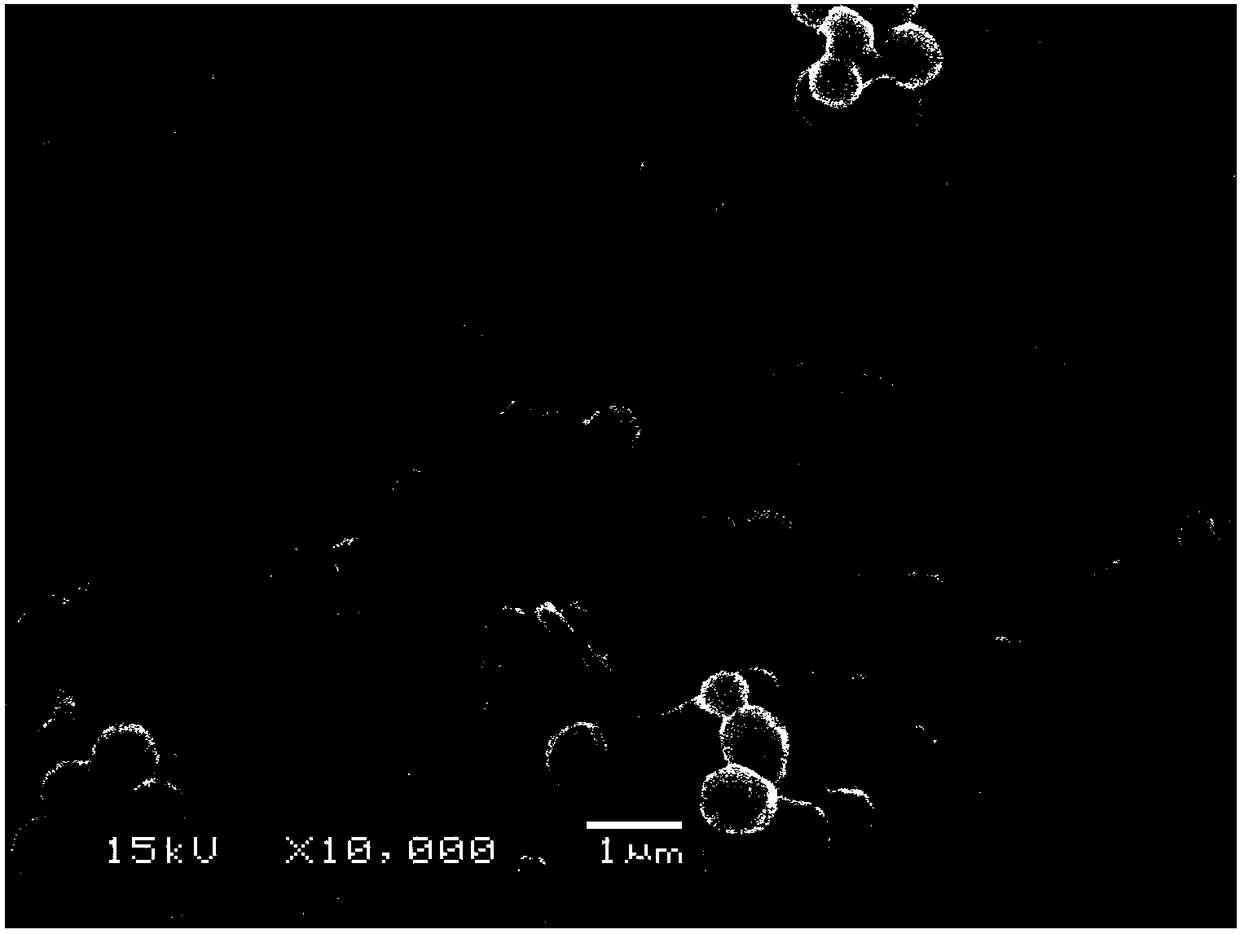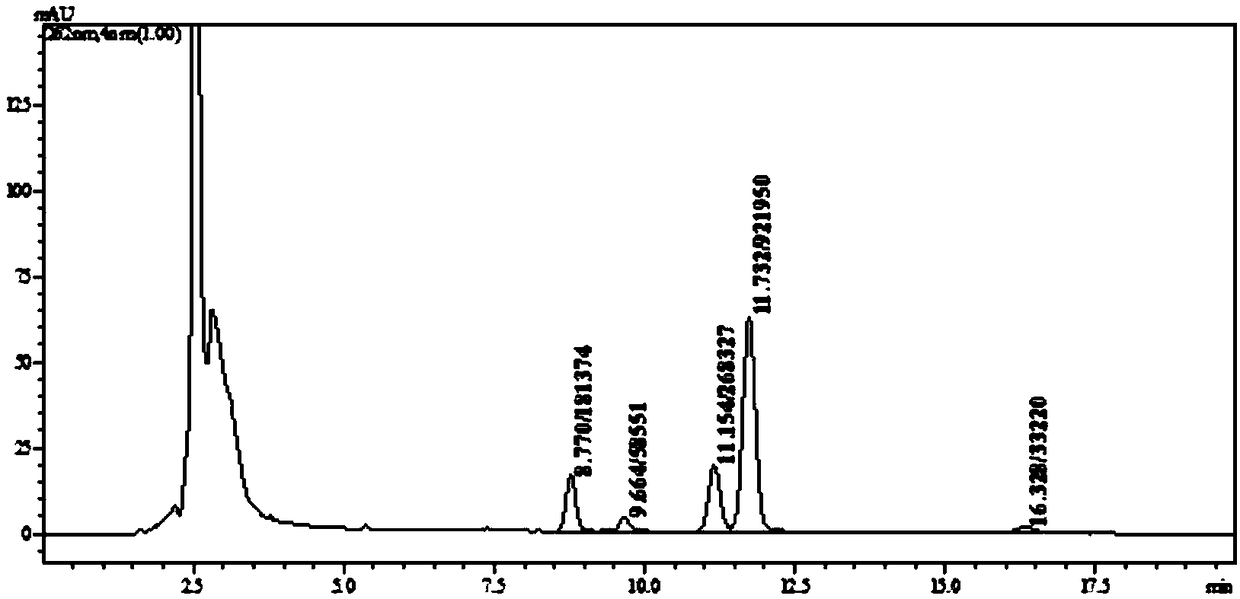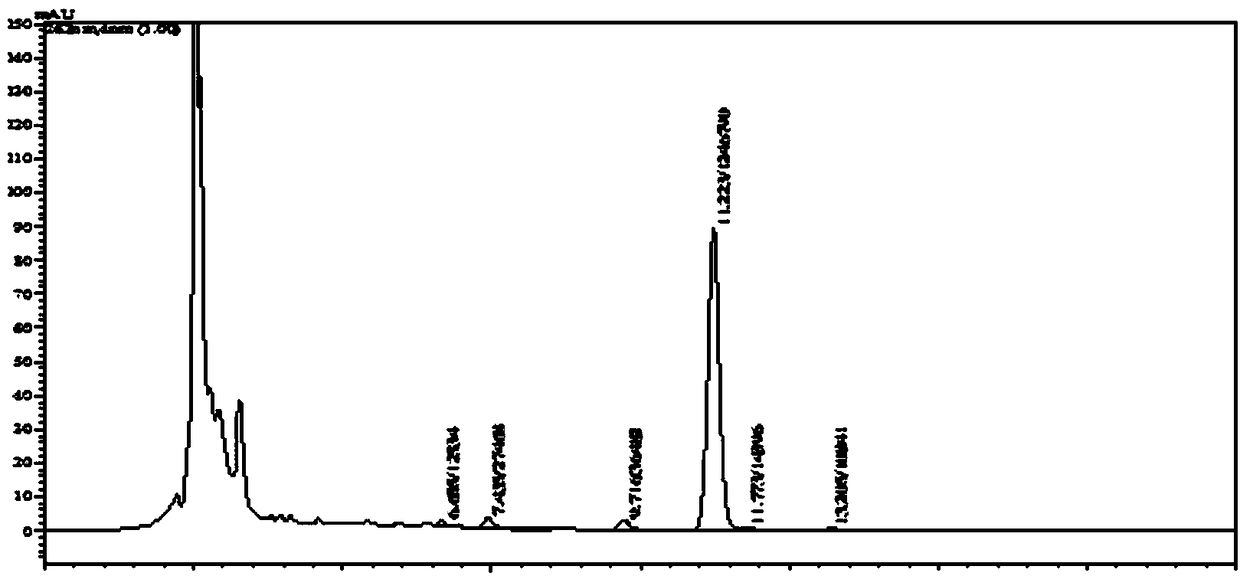Marine Micromonospora strain for fermentation production of Rakicidin B1, and application thereof
A strain and marine technology, which is applied in the field of marine Micromonospora strains fermented to produce RakicidinB1, can solve the problem of low fermentation yield, achieve the effect of increasing fermentation yield, meeting the needs of industrialization, and reducing yield
- Summary
- Abstract
- Description
- Claims
- Application Information
AI Technical Summary
Problems solved by technology
Method used
Image
Examples
Embodiment 1
[0030] Example 1 Mutagenesis and breeding of strains
[0031] This example illustrates that the mutation breeding method of Marine Micromonospora FIM R160609 includes the following steps:
[0032] (1) Preparation of spore suspension: add proper amount of sterile normal saline to the fresh slant of the mature starting strain FIM02523 (preservation number CGMCC NO.12132), gently scrape it with an inoculating spatula, and pour it into a sterile shaker with glass beads Shake the bottle to disperse, filter the hyphae, and leave the spore suspension for later use;
[0033] (2) Nitrosoguanidine (NTG) mutagenesis: Weigh 200mg NGT in a 100ml Erlenmeyer flask, add 2ml acetone, and then add 18ml Tris-aminomethane maleic acid buffer to completely dissolve and mix uniformly to obtain a concentration of 20ml of 10mg / ml NTG solution; mix NTG mother liquor with the prepared bacterial suspension so that the final concentration of NTG is 1mg / ml, 2mg / ml, 3mg / ml, shake culture at 32℃ for 60min; after m...
Embodiment 2
[0037] Example 2 Comparison of starting strain FIM02325 and mutant strain FIM-R160609 in shake flask fermentation
[0038] Scrape the slant spores of FIM02325 and mutant strain FIM-R160609 from freshly cultured marine micromonospora and inoculate them into a shake flask seed culture. After incubating at 32℃ and 250rpm for 48 hours, the inoculum is 5%. It was inoculated into the fermentation medium in a shake flask, incubated at 30°C and 250 rpm for 120 hours, and then placed in the flask. The fermentation product was determined by HPLC.
[0039] Prepare seed culture medium formula (mass fraction): maltodextrin 2.0%, glucose 1.0%, soybean meal powder 1.0%, yeast powder 2.0%, MgSO 4 ·7H 2 O 0.05%, KH 2 PO 4 0.05%, CaCO 3 0.3%, prepared with tap water, adjusted to pH 7.0-7.5; cultured with seed liquid at 30°C.
[0040] Formulated fermentation medium formula (mass fraction): maltodextrin 5.0%, glucose 1.0%, soybean meal powder 2.0%, yeast powder 1.5%, ammonium sulfate 0.8%, MgSO 4 ·7H ...
Embodiment 3
[0045] Example 3 The mutant strain FIM-R160609 was fermented on a 20L fermentor
[0046] According to the formula in Example 2, the seed medium and the fermentation medium were prepared.
[0047] The seeds are shake flask seeds, each 500ml shake flask contains 100ml of liquid, cultivated at 32°C and 250rpm for 48 hours; after that, it is inoculated in a 20L fermenter (the actual amount of liquid is 13L) at a 5% inoculum for fermentation, and cultured at 30°C. The tank pressure is controlled to be 0.03-0.05Mpa, the starting speed is 200rpm, and after 48 hours, it is gradually adjusted to 350rpm according to the change of the fermentation parameter DO, and the aeration rate is 1:1vvm, and it is about 96-120 hours until the end of the fermentation.
[0048] During the fermentation process, the content of Rakkidins in the fermentation broth was detected by HPLC, and the final fermentation titer was: the content of Rakicidin B1 was 436.41 mg / L, the content of Rakicidin B was 11.17 mg / L, a...
PUM
 Login to View More
Login to View More Abstract
Description
Claims
Application Information
 Login to View More
Login to View More - R&D
- Intellectual Property
- Life Sciences
- Materials
- Tech Scout
- Unparalleled Data Quality
- Higher Quality Content
- 60% Fewer Hallucinations
Browse by: Latest US Patents, China's latest patents, Technical Efficacy Thesaurus, Application Domain, Technology Topic, Popular Technical Reports.
© 2025 PatSnap. All rights reserved.Legal|Privacy policy|Modern Slavery Act Transparency Statement|Sitemap|About US| Contact US: help@patsnap.com



